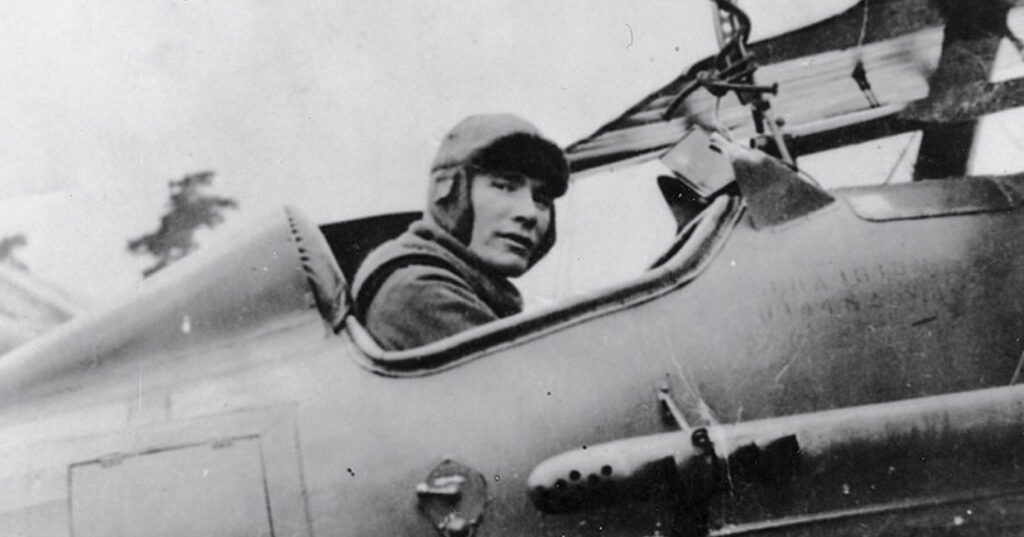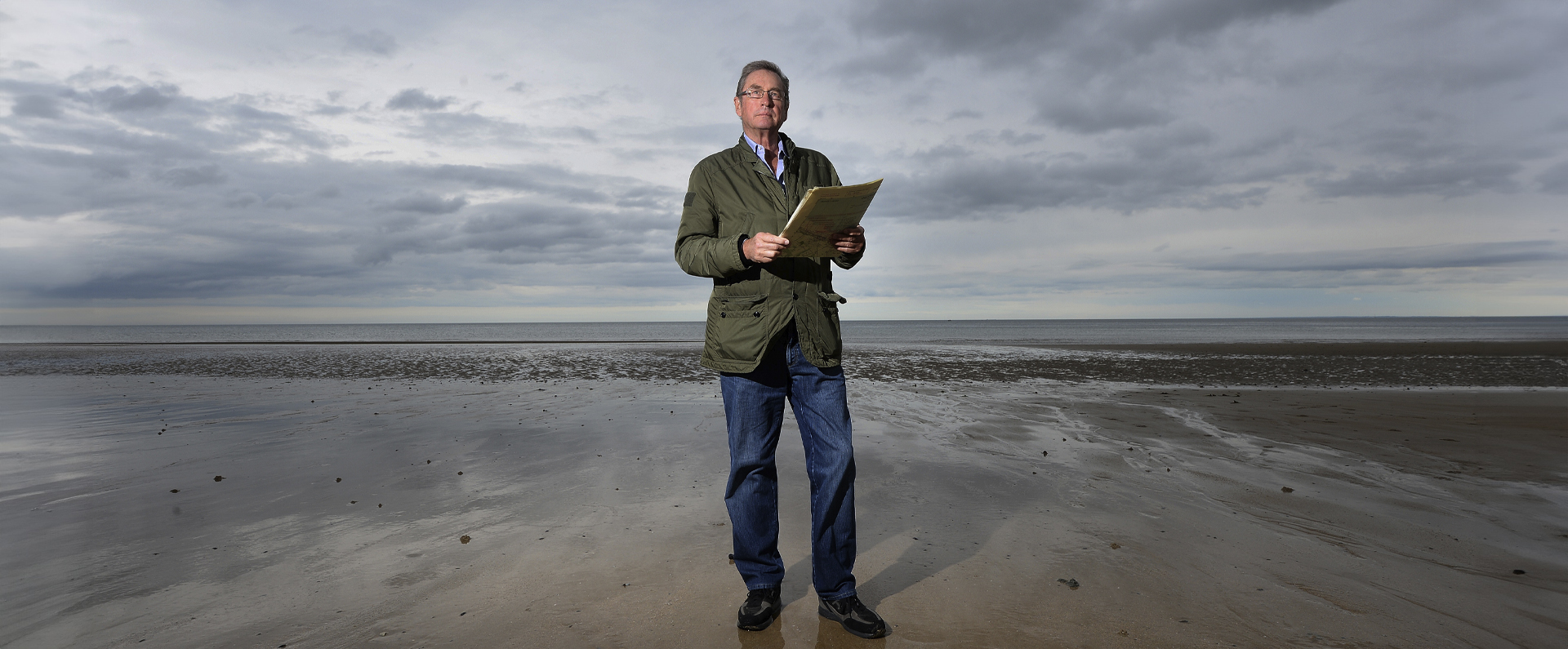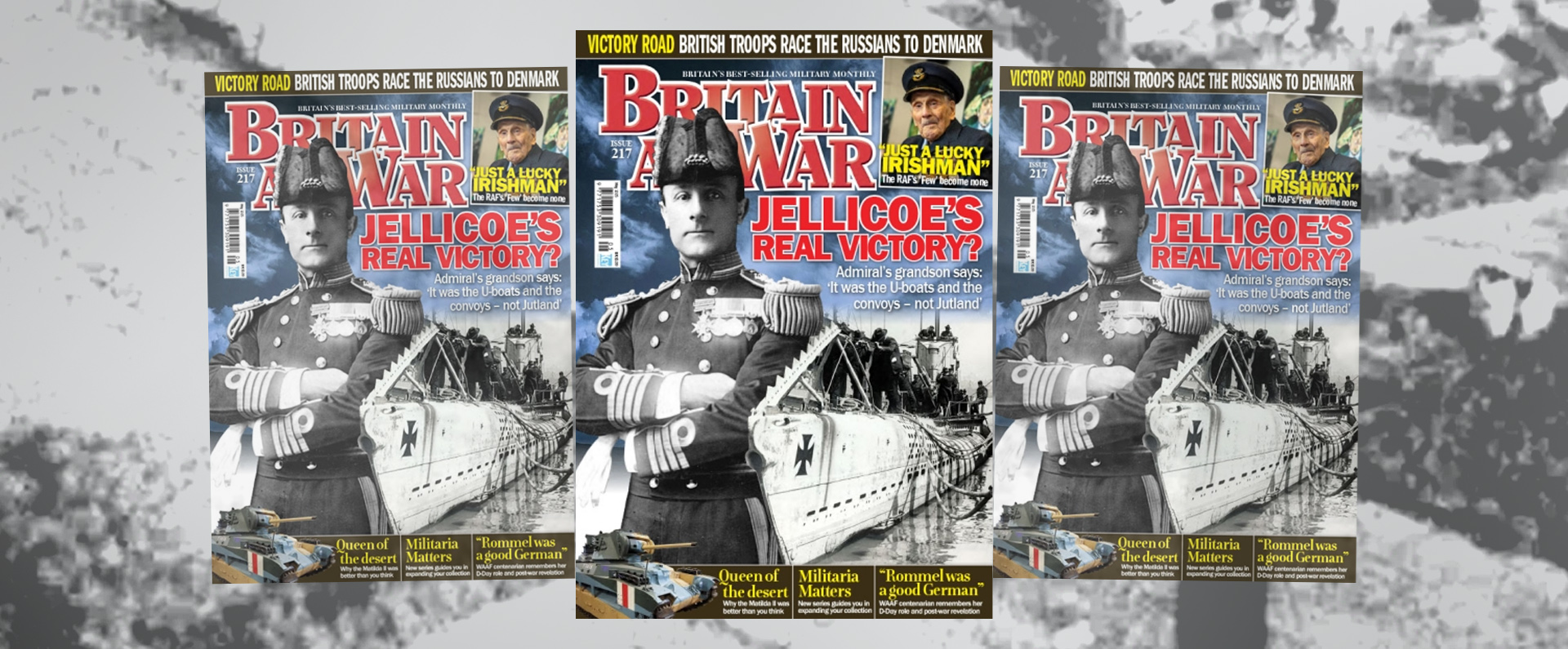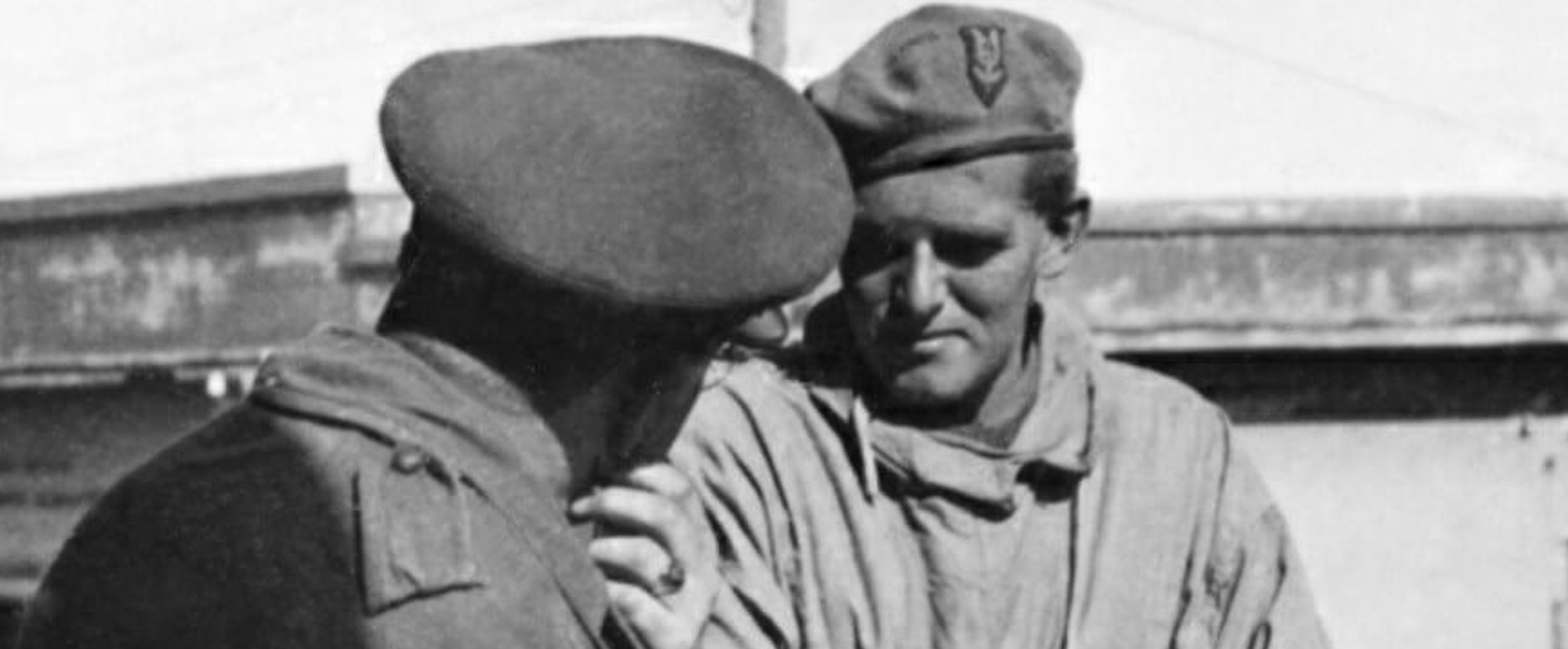
Published in the Sunday Telegraph on 06 April 2014.
Edward ‘Mick’ Mannock – Defiant and ruthless, the top-scoring pilot
‘Mick” Mannock was the highestscoring and most highly decorated British fighter pilot of the First World War and was eventually credited with 73 combat victories, or “kills”. Furthermore, he transformed himself from someone who initially came across as arrogant and brash into one of the greatest legends in RAF history. Mannock undoubtedly had a ruthless streak and a deep hatred of the enemy, but he had a more thoughtful, caring side, too. He was one of the world’s first theorists of aviation tactics and was renowned for his prudent but aggressive leadership in the air.
Mannock, whose first name was Edward but whowas known as Mick because of his Irish roots, was born in Brighton on May 24, 1887, one of five children. His father was a tough Irishman who was a corporal in the 2nd Dragoons, Royal Scots Greys. As a child, he was bright and an avid reader, but had severe astigmatism in his left eye. Incredibly, given his later achievements as a pilot, he suffered from impaired vision in this eye for the remainder of his life.
When he was 13, his wayward father abandoned the family, leaving them desperately short of money. Mannock was forced to leave St Thomas’ School in Canterbury and take a series of menial jobs before he eventually joined his brother, Patrick, who worked for the National Telephone Company.
Mannock was 27 and had moved to Turkey as the leader of a telephone cable-laying gang when the Great War broke out. When Turkey entered the war on Germany’s side, he and other British workers were imprisoned. In jail, he sang patriotic British songs and received regular beatings from the Turkish guards for his impertinence. When he tried to escape, he was put in solitary confinement and his health deteriorated – he had dysentery and suppurating sores – but the American consulate secured his release. Back in Britain, Mannock was listed as “unfit for military duties” but during his imprisonment he had become obsessed with “destroying Germans” and sought a way to channel this obsession.
In July 1915, he re-joined as a sergeant the Territorial unit of the Royal Army Medical Corps (RAMC) in which he had served before going to Turkey. But some of the requirements of the job – one of which was a duty to treat enemy prisoners – troubled him. For after his experiences in the Turkish prison, he had no compassion for the Central Powers or their soldiers.
On April 1, 1916, Mannock was commissioned as a 2nd lieutenant in the Royal Engineers. Then, a chance meeting with an old friend led to a discussion about flying and in August 1916, 2nd Lt Mannock transferred to the Number One School of Military Aeronautics at Reading, qualifying as a pilot in November after further training.
Posted to France in April 1917, he joined his first operational unit, 40 Squadron, at Treizennes. But he created a bad first impression among the squadron as a “boorish knowall” and his first sortie, when he was badly shaken by anti-aircraft fire, reinforced this view. However, he was determined to succeed and opinions soon started to change Nieuport Scout (a single-seater French fighter) out of a “terminal” dive when he was on a practice flight.
He also learnt to control his fear, believing he only needed strength of mind to overcome it. On May 7, he claimed his first success when he and five others shot down a kite balloon – a manned, gas-filled balloon used for reconnaissance – five miles behind German lines. On May 25 and June 1, 1917, he was convinced he had enemy kills, but decided to bide his time until he could make an unquestionable claim. He did not have long to wait; the following week he shot down an Albatros D.III.
On September 17, 1917, Mannock was awarded the MC. His citation stated: “In the course of many combats he has driven off a large number of enemy machines, and has forced down three balloons, showing a very fine offensive spirit and great fearlessness in attacking the enemy at close range and low altitudes under heavy fire from the ground.”
On October 18, Mannock was awarded a bar to his MC. His citation stated: “He has destroyed several hostile machines and driven others down out of control. On one occasion he attacked a formation of five enemy machines single-handed and shot one down out of control. On another occasion, while engaged with an enemy machine, he was attacked by two others, one of which he forced to the ground. He has consistently shown great courage and initiative.” Mannock was becoming a better team player, too: during one sortie he protected a promising young pilot, Lt George McElroy. “McIrish”, as Mannock christened him, went on to become the 10th highest scoring pilot of the war, with 46 victories.
Mannock had his last day with 40 Squadron on January 1, 1918, when he recorded his 21st official “kill”. He returned home for a rest from active service but soon joined 74 (Tiger) Squadron, which was then forming with the new, robust SE5a fighter. He returned to France with the squadron on March 30, leading A Flight. In May, he was reduced to tears by the death of his protégé, Lt Dolan, his wails of grief continuing long into the night. Afterwards, his comrades noticed a new bloodlust, but he never let it cloud his judgment in the air and his number of kills rapidly escalated.
He carried out a series of brilliant manoeuvres against his German opponents; one kill was described by Ira Jones, a fellow pilot, as “a remarkable exhibition of cruel, calculated Hun-strafing”. However, amid all the success he remained a realist, never taking off without his revolver: “to finish myself off as soon as I see the first sign of flames”.
In May 1918, he learnt he had been awarded the DSO. A bar to this award followed later the same month, although neither decoration was formally “gazetted” until September 16. On June 21, 1918, when home again in Britain on much-deserved leave, Mannock was promoted to major and chosen to succeed Major “Billy” Bishop VC in command of 85 Squadron. On his arrival, Mannock reinvigorated the squadron, introducing new tactics and forcing the pilots to work more effectively as a team.
However, Jim Eyles, a close friend, noticed that before he left Britain for his new posting, his nerves seemed to be frayed. Eyles later said: “I well remember his last leave. Gone was the old sparkle we knew so well; gone was the incessant wit. I could see him wringing his hands together to conceal the shaking and twitching, and then he would leave the room when it became impossible for him to control it.
“On one occasion, we were sitting [and] talking quietly when his eyes fell to the floor and he started to tremble violently. He cried uncontrollably. His face, when he lifted it, was a terrible sight. Later he told me that it had just been a ‘bit of nerves’ and that he felt better for a good cry. He was in no condition to return to France, but in those days such things were not taken into account.”
On July 24, 1918, Mannock told his friend Ira Jones by telephone: “I’ve caught up with Bishop’s score now – 72 [including unofficial kills].” Around 5am, two days later, Mannock, flying alongside Lt Donald Inglis, made his final kill above Lestremme.
Disregarding his own strict rule, he then made a couple of low passes over the wreckage, leading the inexperienced Inglis into a storm of smallgun fire from the German trenches. As they zig-zagged away from the scene, Inglis noticed a small bluish flame on his major’s engine cowling. Then the left wing of Mannock’s aircraft fell away and he plunged into a death spin. Inglis, showered in petrol from his own punctured fuel tank, made a crash landing shortly afterwards. After being pulled from his battered aircraft, he announced: “They killed him, the bastards killed my major. They killed Mick.” Mannock had died, aged 31.
Exactly what happened to Mannock remains a mystery. He was buried in an unmarked grave by a German soldier, who also returned Mannock’s identity discs, notebooks and personal effects to his family through the Red Cross. His identity discs are displayed alongside his VC, which is now part of my medal collection. Their pristine state suggests that Mannock’s body had been thrown clear of his aircraft before it was consumed by fire. It may be that he jumped clear of the plane or he may even have fulfilled his pledge to shoot himself at the first sign of flames, falling dead from his machine. The truth will never be known.
By then, Mannock had been awarded his third DSO but this too, along with his earlier awards, was only gazetted after his death. The citation for his second bar, announced on August 3, 1918, stated: “This officer has now accounted for 48 enemy machines. His success is due to wonderful shooting and a determination to get to close quarters; to attain this he displays most skilful leadership and unfailing courage. These characteristics were markedly shown on a recent occasion when he attacked six hostile scouts [aircraft], three of which he brought down. Later on the same day he attacked a two-seater, which crashed into a tree.”
After the war, it was decided that Mannock’s incredible and prolonged courage had still not been fully recognised. After much lobbying, largely by those who had served with and under him, The London Gazette announced his Victoria Cross on July 18, 1919, nearly a year after his death. It recognised only his 50 official kills but concentrated on his achievements in June and July, 1918, concluding: “This highly distinguished officer, during the whole of his career in the Royal Air Force, was an outstanding example of fearless courage, remarkable skill, devotion to duty and self-sacrifice, which has never been surpassed.” As formal next of kin, Edward Mannock, the recipient’s wayward father, was presented by King George V with his son’s VC in the same month. Edward Mannock also received his son’s other gallantry medals even though “Mick” Mannock had left instructions in his will that his father should receive nothing from his estate. His astonishing medal group of VC, three DSOs and two MCs, all awarded for bravery over 15 months, makes Mannock probably the most highly decorated man in my collection.
Download a PDF of the original Sunday Telegraph supplement
For more information, visit:
LordAshcroftOnBravery.com


